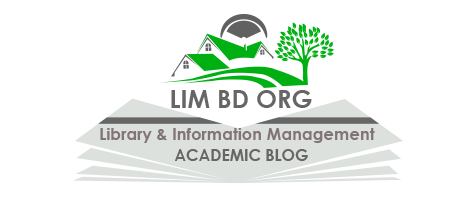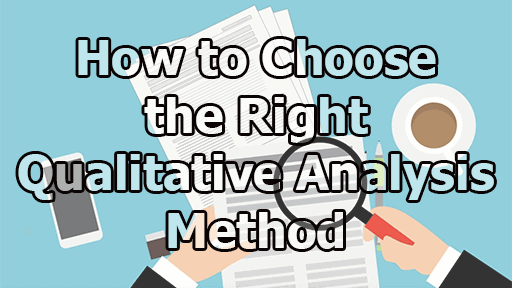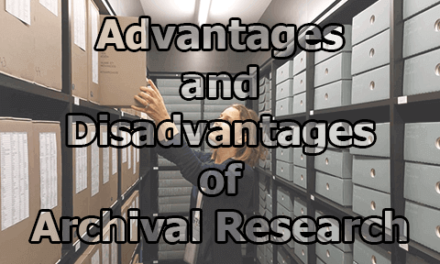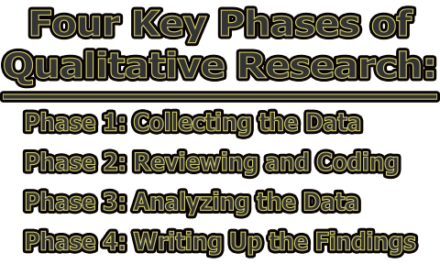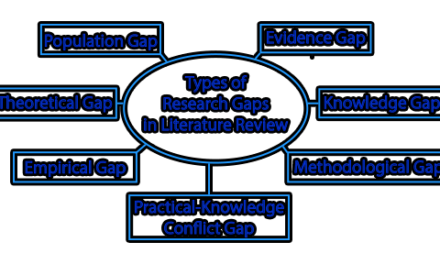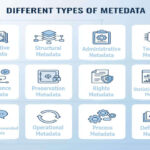How to Choose the Right Qualitative Analysis Method:
Choosing the right qualitative analysis method is a crucial step in any qualitative research project. With various approaches available, researchers must select the method that best aligns with their research objectives, questions, and data type. Each qualitative analysis method serves a distinct purpose, influencing how data is interpreted and the conclusions drawn. This article explores the four primary qualitative analysis methods—content analysis, thematic analysis, narrative analysis, and discourse analysis—providing a detailed understanding of their applications and guiding researchers on how to choose the right qualitative analysis method.
The Big 4 Qualitative Analysis Methods:
Qualitative research offers multiple approaches to analyzing textual, visual, and spoken data. The four most commonly used qualitative analysis methods—content analysis, thematic analysis, narrative analysis, and discourse analysis—provide different ways of interpreting data based on research objectives and theoretical frameworks.
1. Content Analysis: Content analysis is a systematic technique used to analyze text, visual, or audio content by categorizing and quantifying elements within the data (Krippendorff, 2018). It enables researchers to identify patterns, trends, and relationships between themes by applying both qualitative and quantitative techniques.
Key Characteristics:
- Objective and systematic: Content analysis follows a structured approach to coding and categorizing data.
- Quantifiable and replicable: It allows researchers to measure frequency and relationships within datasets.
- Applicable to various media formats: Content analysis can be used for text, images, video, and audio recordings.
Key Data Types:
- Interview transcripts
- News articles, academic journals, and books
- Social media posts
- Videos, advertisements, and images
Example: A study analyzing media portrayals of climate change can use content analysis to measure how often specific terms like “global warming” or “carbon emissions” appear in articles and broadcasts. This method provides insights into public discourse and media framing of environmental issues (Neuendorf, 2017).
Ideal For:
- Studies focusing on systematic trends and patterns in data.
- Research that requires a mix of qualitative and quantitative approaches.
2. Thematic Analysis: Thematic analysis is one of the most widely used qualitative methods, focusing on identifying, analyzing, and interpreting patterns of meaning within textual data (Braun & Clarke, 2006). This method is particularly useful for understanding how individuals experience and perceive specific phenomena.
Key Characteristics:
- Flexible and adaptable: Thematic analysis can be applied across different research fields and disciplines.
- Data-driven and theory-driven approaches: Researchers can identify themes inductively (emerging from the data) or deductively (based on pre-existing theories).
- Emphasizes depth and meaning: The method helps researchers capture subtle meanings in participants’ experiences.
Key Data Types:
- Interview transcripts
- Focus group discussions
- Open-ended survey responses
- Personal diaries and written reflections
Example: A study investigating how remote workers cope with isolation can use thematic analysis to identify recurring themes such as “flexibility,” “lack of community,” or “increased productivity” (Nowell et al., 2017). By analyzing common themes, researchers gain deeper insights into remote work experiences.
Ideal For:
- Exploratory research focused on understanding individual perspectives.
- Studies that require in-depth analysis of personal experiences and behaviors.
3. Narrative Analysis: Narrative analysis examines the ways individuals construct and communicate their experiences through storytelling. It focuses on both the structure and content of narratives, offering insight into how people make sense of their lives (Riessman, 2008).
Key Characteristics:
- Focuses on chronology and meaning-making: Narrative analysis examines how individuals frame and organize their experiences over time.
- Emphasizes individual agency and perspective: This method highlights how people interpret life events.
- Context-sensitive: Narrative analysis considers cultural, social, and historical influences on storytelling.
Key Data Types:
- In-depth interviews
- Autobiographies and memoirs
- Oral histories and life stories
- Diaries and personal letters
Example: A study exploring the experiences of frontline healthcare workers during a crisis can use narrative analysis to understand how they frame their experiences, highlight key events, and interpret their roles within the larger healthcare system (Chase, 2018).
Ideal For:
- Research that values the chronological and structural aspects of personal storytelling.
- Studies interested in how individuals construct meaning from their lived experiences.
4. Discourse Analysis: Discourse analysis investigates how language is used in communication, examining broader social, cultural, and political contexts (Gee, 2014). This method goes beyond analyzing content to explore how language shapes power dynamics, ideologies, and identity.
Key Characteristics:
- Context-dependent: Discourse analysis considers the historical, political, and social contexts of communication.
- Critical perspective: It often examines how language reinforces power structures and societal norms.
- Focuses on linguistic features: Discourse analysis looks at tone, metaphor, framing, and rhetorical strategies.
Key Data Types:
- Political speeches and interviews
- Government policy documents
- Social media discussions and news reports
- Advertising and marketing materials
Example: If a researcher studies how politicians discuss climate change, discourse analysis can reveal how language is used to shape public opinion, reinforce specific ideologies, or challenge dominant narratives (Fairclough, 2013).
Ideal For:
- Research exploring language and its role in shaping social and political constructs.
- Studies focusing on media representation, identity construction, and ideology.
How to Choose the Right Qualitative Analysis Method:
Selecting the appropriate qualitative analysis method requires considering three key factors: research aims, research questions, and data type.
1. Research Aims:
- If the goal is to identify patterns and trends in textual data, content analysis is the best choice.
- If the aim is to explore people’s lived experiences and perceptions, thematic analysis is ideal.
- If the study focuses on how individuals construct and tell their stories, narrative analysis is most suitable.
- If analyzing the role of language in shaping meaning and power structures, discourse analysis is recommended.
2. Research Questions:
- “What are the trends in media representation?” → Content analysis
- “How do individuals experience a specific phenomenon?” → Thematic analysis
- “How do people construct meaning in their narratives?” → Narrative analysis
- “How is language used to establish power and ideology?” → Discourse analysis
3. Data Type:
- Large datasets with quantifiable elements → Content analysis
- Rich descriptive data (interviews, open-ended surveys) → Thematic analysis
- Personal stories and autobiographies → Narrative analysis
- Language-rich texts (political speeches, policy documents) → Discourse analysis
By carefully aligning the research aims, questions, and data type with the appropriate analysis method, researchers ensure a methodologically sound and meaningful study.
At the end of the day, we can say that choosing the right qualitative analysis method is crucial for ensuring research findings are valid, meaningful, and aligned with study objectives. By carefully considering research aims, questions, and data type, researchers can select the most appropriate approach—whether it be content, thematic, narrative, or discourse analysis. Each method offers unique insights, making it essential to match the method with the research purpose to achieve a robust and credible analysis.
References:
- Braun, V., & Clarke, V. (2006). Using thematic analysis in psychology. Qualitative Research in Psychology, 3(2), 77-101. https://doi.org/10.1191/1478088706qp063oa
- Chase, S. E. (2018). Narrative inquiry: Toward theoretical and methodological maturity. In Denzin & Lincoln (Eds.), The Sage Handbook of Qualitative Research (5th ed.). SAGE Publications.
- Fairclough, N. (2013). Critical discourse analysis: The critical study of language (2nd ed.). Routledge.
- Gee, J. P. (2014). An introduction to discourse analysis: Theory and method (4th ed.). Routledge.
- Krippendorff, K. (2018). Content analysis: An introduction to its methodology (4th ed.). SAGE Publications.
- Neuendorf, K. A. (2017). The content analysis guidebook (2nd ed.). SAGE Publications.
- Nowell, L. S., Norris, J. M., White, D. E., & Moules, N. J. (2017). Thematic analysis: Striving to meet the trustworthiness criteria. International Journal of Qualitative Methods, 16(1), 1-13. https://doi.org/10.1177/1609406917733847
- Riessman, C. K. (2008). Narrative methods for the human sciences. SAGE Publications.

Library Lecturer at Nurul Amin Degree College
